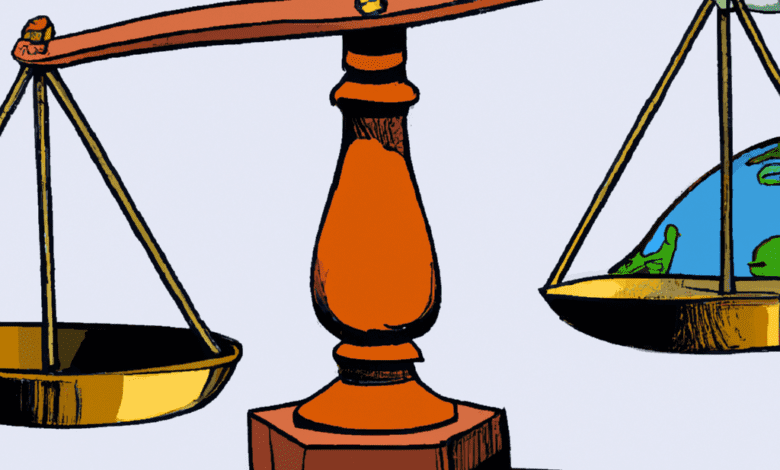Balancing Act: The Influence of Mining Regulations on Metal Prices and Global Markets

In an increasingly interconnected global economy, the intricate relationship between mining regulations and metal prices has become a focal point for investors, policymakers, and environmental advocates alike. As governments worldwide grapple with the dual imperatives of resource extraction and environmental stewardship, the regulatory landscape is evolving—often in ways that reverberate throughout the metal markets. Stricter mining policies can serve as a double-edged sword, simultaneously safeguarding ecosystems while potentially constraining supply and driving prices upward. In this article, we will explore the profound impact of these regulations on metal prices, examining the ripple effects that emerge in global markets as a result of policy shifts. We will also delve into the delicate balancing act that nations face as they navigate the complex interplay between environmental concerns and the economic stability that depends on the mining sector. Join us as we unpack the nuances of mining regulations and their far-reaching implications for the future of metal pricing.
- 1. **"Mining Regulations: A Double-Edged Sword for Metal Prices"**
- 2. **"The Ripple Effect: How Stricter Mining Policies Influence Global Markets"**
1. **"Mining Regulations: A Double-Edged Sword for Metal Prices"**
Mining regulations play a crucial role in shaping the dynamics of metal prices, acting as a double-edged sword that can either stabilize or destabilize the market. On one hand, stringent regulations can lead to increased operational costs for mining companies, which may ultimately result in higher prices for metals. When regulatory frameworks demand enhanced safety measures, environmental protections, and social responsibility, companies may incur significant expenses to comply. These costs are often passed on to consumers, driving up metal prices. For example, regulations aimed at reducing carbon emissions or protecting local ecosystems can limit production capabilities, restricting supply and creating upward pressure on prices.
Conversely, overly restrictive regulations can stifle investment in the mining sector, leading to reduced exploration and development of new mining projects. When companies perceive the regulatory environment as unpredictable or excessively burdensome, they may be less inclined to invest in new operations or expand existing ones. This hesitance can result in supply shortages, particularly in times of increased demand, further exacerbating price volatility. Additionally, regulatory changes can lead to market uncertainty, causing speculators to react swiftly to shifting policies, which can create further fluctuations in metal prices.
Moreover, the impact of mining regulations is not uniform across different metals or regions. Precious metals like gold and silver may react differently to regulatory changes compared to base metals like copper or aluminum. In regions with abundant resources but weak governance, lax regulations can lead to over-exploitation and environmental degradation, potentially driving down prices temporarily due to oversupply. In contrast, well-regulated environments may enhance sustainability and attract long-term investment, fostering stability in metal prices.
Ultimately, the relationship between mining regulations and metal prices is complex and multifaceted. While regulations are necessary to ensure responsible mining practices and protect the environment, their design and implementation must strike a delicate balance. Policymakers must consider the potential economic impacts on metal prices, ensuring that regulations promote sustainability without imposing undue burdens that could lead to market instability.
The relationship between mining regulations and metal prices is complex and multifaceted, as these regulations can significantly influence both the supply side of the market and investor sentiment. Stricter mining regulations often arise from environmental concerns, social implications, and the need for sustainable practices. When governments impose such regulations, they can lead to increased operational costs for mining companies. For instance, additional requirements for environmental assessments, waste management, and worker safety can necessitate higher investments in compliance, which may reduce profitability.
As mining companies face higher costs, the supply of metals may be constrained. If mining operations become less economically viable due to stringent regulations, companies might choose to scale back production, delay expansion projects, or even close unprofitable mines. Such supply disruptions can contribute to a tightening of the market, potentially driving metal prices higher. This dynamic is particularly evident in markets for precious metals like gold and silver, where regulatory changes in key producing countries can lead to immediate fluctuations in global prices.
Moreover, the anticipation of regulatory changes can also affect market psychology. Investors tend to react not just to current supply levels but also to the potential future landscape. If the market perceives that regulations will hinder production significantly, speculative buying can drive prices up even before any actual supply constraints materialize. Conversely, if regulatory environments are perceived as becoming more favorable, it can lead to increased investments in mining projects, boosting supply and potentially depressing prices.
Additionally, the geopolitical context plays a crucial role. Countries rich in mineral resources may use regulations as tools for economic leverage, impacting international relations and trade. For instance, when a nation implements new mining laws, it can alter the competitive landscape for metal producers, influencing global supply chains and, consequently, market prices.
In summary, mining regulations profoundly impact metal prices through their effects on production costs, supply constraints, investor sentiment, and geopolitical dynamics. As the world increasingly prioritizes sustainable mining practices, the interplay between regulation and metal prices will likely continue to evolve, shaping the future of the industry and the global economy at large.
2. **"The Ripple Effect: How Stricter Mining Policies Influence Global Markets"**
Stricter mining policies can create a ripple effect that extends far beyond the immediate regions of extraction, influencing global metal markets in multifaceted ways. When governments implement tighter regulations—be it through increased environmental protections, stricter labor laws, or enhanced safety standards—mining companies often face higher operational costs. These costs can stem from the need for additional compliance measures, investments in cleaner technologies, or delays in project timelines due to more rigorous permitting processes. As companies grapple with these financial pressures, they may be compelled to adjust their pricing strategies, leading to increased metal prices in the global market.
Moreover, the imposition of stricter regulations can lead to reduced supply, particularly if existing operations are forced to scale back or if new projects are delayed or canceled altogether. A decrease in available metals, particularly for critical resources like copper, lithium, and cobalt, can create supply shortages. As demand continues to rise, especially from emerging technologies such as electric vehicles and renewable energy systems, the imbalance between supply and demand can drive prices upward.
The impact of these regulations is often felt most acutely in regions that are heavily dependent on mining, where local economies can be significantly affected by changes in production levels. As metal prices rise due to reduced supply from stricter regulations, countries that rely on exporting these resources may experience increased revenues, but this can also lead to volatility in local economies that are sensitive to price fluctuations.
Additionally, global investors closely monitor regulatory changes, as they can signal broader trends in market stability and sustainability. Stricter mining policies may attract socially responsible investment, leading to shifts in capital allocation toward companies that prioritize environmentally friendly practices. Conversely, regions perceived as having overly burdensome regulations may deter investment, further tightening the supply of certain metals and exacerbating price increases.
In summary, the interplay between mining regulations and metal prices is complex, with stricter policies leading to higher operational costs, reduced supply, and shifts in investor behavior. As the world moves toward a more sustainable future, understanding these dynamics will be vital for stakeholders across the mining sector and the broader global economy.
In conclusion, the intricate relationship between mining regulations and metal prices reveals a complex landscape shaped by economic, environmental, and geopolitical factors. As we have explored, stricter mining policies can act as a double-edged sword—while they are essential for promoting sustainable practices and protecting local communities, they can also lead to reduced supply and increased costs, ultimately driving up metal prices. The ripple effects of these regulations extend far beyond the mining sector, influencing global markets, investment strategies, and consumer behavior. As nations grapple with the need for responsible resource extraction, industry stakeholders must navigate this challenging terrain, balancing compliance with profitability. Moving forward, it will be crucial for policymakers and the mining industry to collaborate, ensuring that regulations foster both environmental stewardship and economic stability, ultimately creating a sustainable framework that benefits all parties involved. As we watch these dynamics unfold, the evolving landscape of mining regulations will undoubtedly continue to shape the future of metal prices and the broader market ecosystem.





